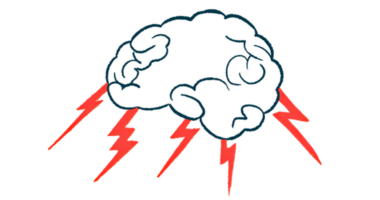Pregnenolone for Parkinson’s seen to ease involuntary movement in rats
Treatment worked with no effects on levodopa-induced motor improvements

The natural brain-produced steroid pregnenolone showed benefits in a rat model of Parkinson’s disease, where it was found to slow the development of levodopa-induced dyskinesia, or uncontrollable involuntary movements.
Importantly, the treatment did not affect levodopa-induced motor improvements in the model.
“Our data suggest that restoring [pregnenolone] levels efficaciously counterbalances the alterations” seen in the brain of Parkinson’s animal models following levodopa treatment, the researchers wrote. This suggests that similar effects also may be seen in Parkinson’s patients experiencing levodopa-induced dyskinesia, or LID, after prolonged therapy with levodopa and its derivatives.
The study, “Pregnenolone for the treatment of L-DOPA-induced dyskinesia in Parkinson’s disease,” was published in the journal Experimental Neurology.
Investigating the benefits of pregnenolone in rat models
Parkinson’s disease is driven by the progressive loss of the brain’s dopaminergic neurons — nerve cells that help control body movements by releasing the major brain signaling molecule dopamine.
Levodopa, a molecule that can be converted to dopamine in the brain, is a standard Parkinson’s treatment. But while such treatment can be effective for controlling Parkinson’s symptoms, long-term use of levodopa often leads to the development of dyskinesia.
There are no effective and durable therapies now available to control LID. As such, “there is a compelling unmet need for new and more effective medications to treat the troublesome side effect of chronic [levodopa-based] medications while extending its beneficial effects,” the researchers wrote.
Neurosteroids are a class of steroids produced in the brain that have the ability to modulate nerve cell activity, including dopamine signaling. These natural steroids are known to be dysregulated in the brain and bodily fluids of Parkinson’s patients and animal models.
A prior study in a rat model of Parkinson’s showed that levels of the neurosteroid pregnenolone, known as PREG, were reduced in the brain’s striatum, the location of dopaminergic neurons.
Other research demonstrated that blocking 5-alpha reductase (5AR), a key enzyme involved in neurosteroid production, increases PREG levels and, in a rat model of the neurodegenerative disease, was shown to lessen dyskinesia.
Taking this a step further, a team of researchers in Italy investigated whether PREG treatment could ease the development of LIDs in a rat model of Parkinson’s. This model is generated by injecting the toxic chemical 6-OHDA directly into the striatum, resulting in neuronal loss and motor deficits similar to those seen in Parkinson’s patients.
Benefits seen with pregnenolone at 3 tested doses
The rat model was injected with either PREG or dutasteride (DUTA) — a 5AR blocker — 24 hours before levodopa treatment initiation and 40 minutes before daily levodopa therapy. The treatments were administered for three weeks.
Researchers tested three escalating doses of PREG: 6, 18, and 36 mg/kg. The results showed that all doses effectively reduced LIDs over time, with the 18-mg/kg dose being effective from the first day of treatment. In turn, DUTA effects on LIDs became significant after about one week of treatment, as reported previously.
The lowest PREG dose showed a similar effect to DUTA, but the higher doses of PREG (18 and 36 mg/kg) had a greater effect in reducing LIDs.
Importantly, PREG was still fully effective for up to 22 days of treatment, suggesting no tolerance to the therapy.
In addition, while the rat model showed maximum LIDs between 40 and 80 minutes after levodopa treatment, animals treated with PREG or DUTA showed a significant reduction in LIDs already at 40 minutes.
“The antidyskinetic effects of DUTA and of the low dose of PREG were significant up to the 100[-minute] time point, while those produced by the higher doses persisted longer,” the researchers wrote.
When looking at specific domains of LIDs, the team found that PREG eased limb dyskinesia in a dose-dependent manner. Also, its effects were especially pronounced against axial — meaning trunk, neck, and/or head — dyskinesia, with a reduction of 65% by day 22 with its highest dose. In turn, face and tongue dyskinesia only showed a trend for reduction.
In general, “all the dyskinesia components were similarly affected by the lowest dose of PREG and DUTA, while the dampening effect on LIDs was higher as the PREG dose used increased,” the team wrote.
Given that anti-dyskinesia therapies typically don’t affect the levodopa effects in motor disability, the researchers assessed the animals’ motor skills in two tests. These results suggested “no adverse effects of PREG and DUTA treatment on [levodopa-induced] motor activation,” the researchers wrote.
PREG treatment may be novel tool for LIDs
At the end of the study, analyses of the animals’ brains showed that PREG-treated rats had a significant, dose-dependent increase in PREG levels in the striatum. The levels of other neurosteroids seemed unaffected by PREG treatment.
Molecular analyses indicated that rats treated with levodopa had increased levels of striatal markers of dyskinesia, but administration of DUTA or PREG prevented their increase.
Moreover, DUTA or PREG treatment, particularly at the two higher doses, reduced the formation of certain dopamine receptor complexes that have been linked to LIDs. The levodopa-induced increase in striatal levels of the brain-derived neurotrophic factor (BDNF), which is thought to be involved in LIDs, also was dampened by PREG in a dose-dependent manner.
“All these data suggest pregnenolone as a key player in the antidyskinetic properties of 5AR inhibitors and highlight this neurosteroid as an interesting novel tool to target LIDs in [Parkinson’s disease],” the researchers wrote.
Additional research into the potentials benefits of pregnenolone is needed, according to the team, “to clarify the precise mechanisms by which neurosteroids affect LIDs.”
“This is the first report showing a direct effect of PREG on this troublesome side effect of [levodopa] chronic treatment and its ability to modulate striatal BDNF levels and [dopamine receptor] interaction,” they concluded.









